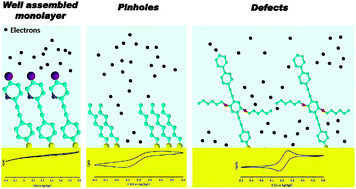Comparative electrochemical and impedance studies of self-assembled rigid-rod molecular wires and alkanethiols on gold substrates†
Abstract
A study of the charge transfer and

* Corresponding authors
a
Department of Chemistry, Durham University, South Road, Durham, UK
E-mail:
Ritu.kataky@durham.ac.uk
b Advanced Organic Materials and Devices Laboratory, Department of Chemistry, Faculty of Science, Ubon Ratchathani University, Warinchumrap, Ubon Ratchathani 34190, Thailand
A study of the charge transfer and

 Please wait while we load your content...
Something went wrong. Try again?
Please wait while we load your content...
Something went wrong. Try again?
F. A. Aguiar, R. Campos, C. Wang, R. Jitchati, A. S. Batsanov, M. R. Bryce and R. Kataky, Phys. Chem. Chem. Phys., 2010, 12, 14804 DOI: 10.1039/C005402J
To request permission to reproduce material from this article, please go to the Copyright Clearance Center request page.
If you are an author contributing to an RSC publication, you do not need to request permission provided correct acknowledgement is given.
If you are the author of this article, you do not need to request permission to reproduce figures and diagrams provided correct acknowledgement is given. If you want to reproduce the whole article in a third-party publication (excluding your thesis/dissertation for which permission is not required) please go to the Copyright Clearance Center request page.
Read more about how to correctly acknowledge RSC content.
 Fetching data from CrossRef.
Fetching data from CrossRef.
This may take some time to load.
Loading related content
